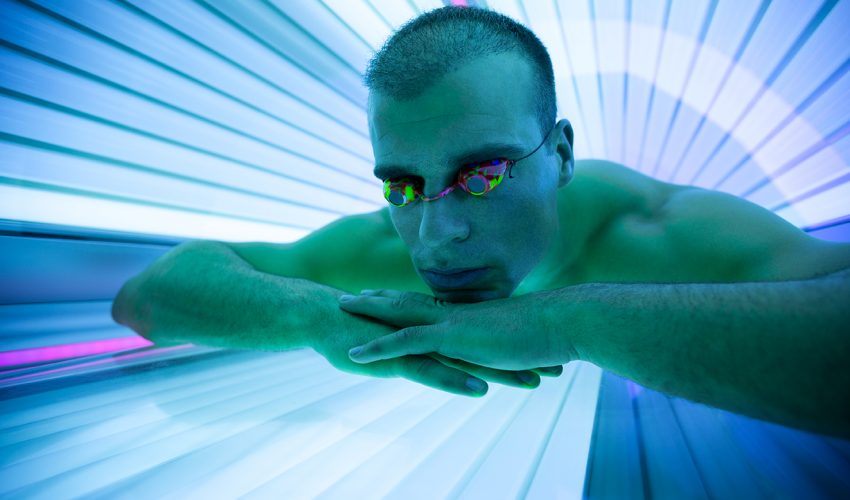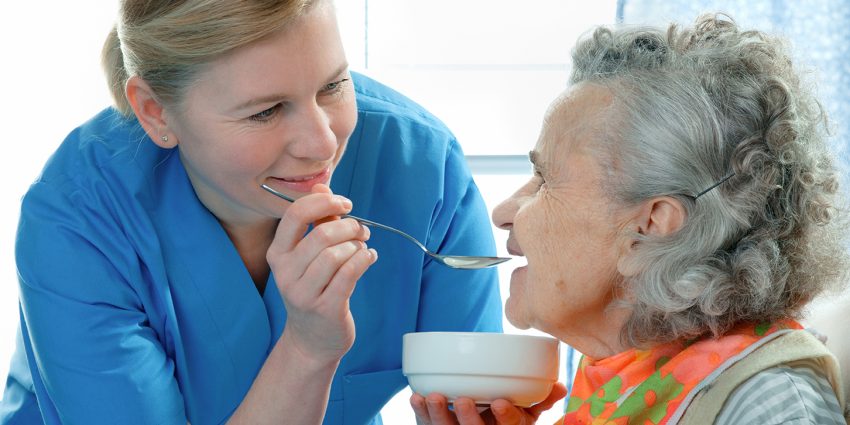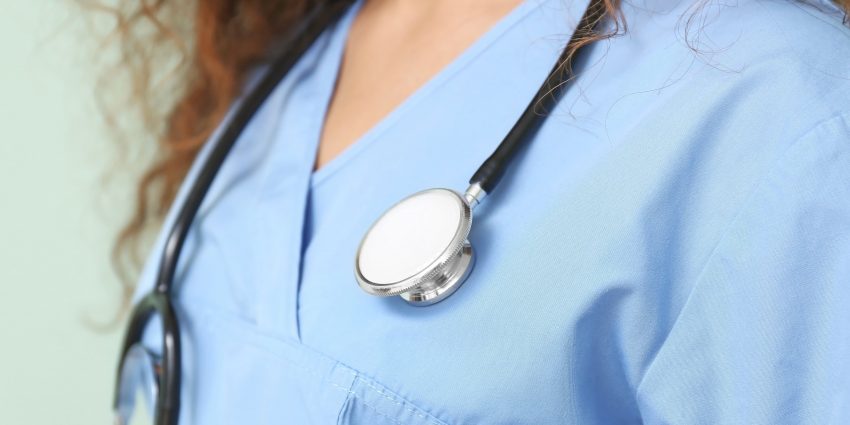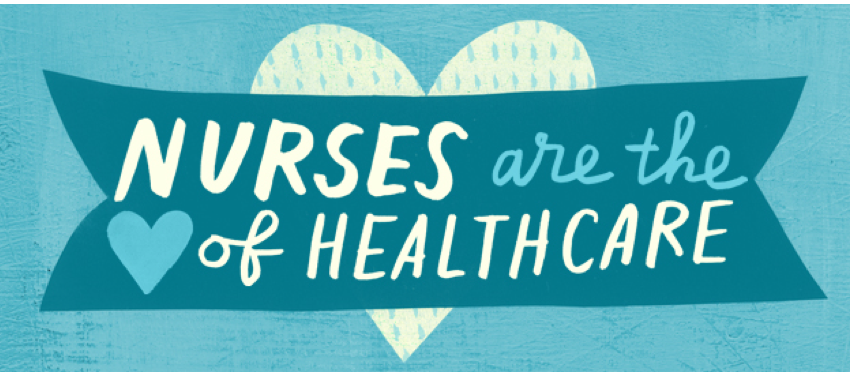Post Views: 3,196
ViewsTanning and Sun Protective Behavior
By Sherri Richardson DNP, APRN-CNP
Skin cancer is the most common form of cancer in the United States with over two million people diagnosed annually (Skin Cancer Foundation, 2014). Ultraviolet radiation from damaging rays of the sun can cause melanoma, basal cell, and squamous cell carcinoma (Chen, Halliday, & Damian (2013). Basal cell carcinoma and melanoma are a result of intermittent exposure to the damaging radiation, whereas squamous cell carcinoma is a cumulative damage over time (Jasterzbski, Janniger, & Schwartz, 2016). Melanoma has the highest rate reported in young adults, and has become more predominant in the United States as well as other countries (Ng, Chang, Cockburn, & Peng, 2012). Melanoma accounts for less than five percent of all skin cancers, but is responsible for the most skin cancer deaths (American Academy of Pediatrics, 2011).
The United States Preventive Services Task Force has recommended that it is beneficial to counsel children, teenagers, and young adults between the age range of 10 to 24 years who have fair skin about minimizing ultraviolet radiation exposure (United States Preventive Task Force [USPSTF], 2012). The highest risk population for skin cancer includes those who have characteristic traits of fair skin, light hair, light eye color or freckles (USPSTF, 2012). However, other ethnic groups that are at risk include African Americans, Asians, and Hispanics (Wich et al., 2011). The African American and Asian populations have a tendency of developing melanoma in sun protected areas which can put them at high risk of diagnosis in the late stages (Wich et al., 2011).
Skin cancer statistics have continued to rise in the United States (Centers for Disease Control, 2011). Sun protective behavior and tanning bed use are risk factors that contribute to the development of skin cancer (World Health Organization, 2009). The aim of this study was to provide a method for healthcare providers to identify high risk patients from the age range of 11 to 29 years who are at high risk for developing skin cancer based on their tanning and sun protective behaviors. A self-report questionnaire and “Be Sun Smart” handout from the American Academy of Dermatology, were used to evaluate tanning and sun protective behaviors. The self-report questionnaire focused on sun protective habits and the reasons for tanning to aid the healthcare provider in identifying those who were considered high risk. The “Be Sun Smart” handout provided written instructions and reinforcement of healthcare provider counseling. This process of counseling and education were guided by the Health Belief Model and Self Efficacy theory.
Change Model Process
The Health Belief Model is a theory that was developed in the 1950’s by a group of social psychologists affiliated with the United States Public Service (Current Nursing, 2013). The purpose of the model is to evaluate problem behaviors that evoke health concerns (Current Nursing, 2013). The concept focuses on the principle that health behavior is influenced by personal beliefs about a disease and a strategy to decrease the occurrence (Glanz, Rimer, & Lewis, 2010). The Health Belief Model is made up of seven constructs related to behavior change which includes; perceived susceptibility, perceived benefits, perceived barriers, perceived seriousness or severity, modifying variables, cues to action, and self-efficacy (Glanz, Rimer, & Lewis, 2010).
Perceived susceptibility is related to a person believing that he or she is at risk for a disease (Glanz, Rimer, & Lewis, 2010). If a person becomes aware of the risk of skin cancer through sun exposure or the use of tanning beds, this can influence a change of behavior (Davati, Pirasteh, Yahyaei, & Shakouri, 2013). Perceived susceptibility and perceived severity are measured through the self-report questionnaire regarding sun protective behavior through the use of sunscreen, gloves, and caps, avoiding the sun during high sunshine hours, walking in shade or covered areas, and use of sunglasses.
After a person understands the risk of skin cancer, the threat to their overall health can be a motivating factor to change their future tanning and sun protective behavior (Butler et al., 2011; Davati, Pirasteh, Yahyaei, & Shakouri, 2013). The perceived threat can be measured on the basis of the answers related to sun protective behaviors (Davati, Pirasteh, Yahyaei, & Shakouri, 2013). These responses will indicate whether or not the target population views unprotected ultraviolet radiation exposure as being a threat on their present and future health (Davati, Pirasteh, Yahyaei, & Shakouri, 2013).
A person’s knowledge and behavior are modifiable risk factors that can involve perceptions that have been influenced by multiple variables such as culture, peers, and past experiences (Glanz, Rimer, & Lewis, 2010). These modifiable variables can also serve as a barrier in promoting an intention for behavior change (Glanz, Rimer, & Lewis, 2010). A person’s perceived barrier to a behavior change involves the evaluation of the obstacles that could prevent adopting the change (Glanz, Rimer, & Lewis, 2010). These barriers are evaluated by the self-report questionnaire responses on reasons for tanning and sun protective practices. The goal of the healthcare provider counseling and educational handout intervention are to provide a cue to action by increasing the patient’s knowledge on sun protection and skin cancer risks.
The perceived benefit construct focuses on the person believing the changed behavior will decrease their risk for contracting a disease (Glanz, Rimer, & Lewis, 2002). If a person does not believe the behavior change benefits outweigh the consequences, then they most likely will not make the change (Glanz, Rimer, & Lewis, 2010). The perceived benefit can be evaluated based on sun protective behaviors. Those who actively utilize sun protection will perceive these practices as a beneficial action in preventing damage to their skin.
Perceived self-efficacy relates to a person’s thoughts and abilities to make a change (Cho, Sands, & Wilson, 2010). For a person to stop using tanning beds and change their unprotected sun exposure habits, they will have to believe that the changed behavior will decrease their health risk of developing skin cancer (Shelestak, & Lindow, 2011).
Summative Evaluation
A statistical analysis was performed on the data collected using the statistical package for the social sciences (SPSS) software to analyze the data. An analysis was performed on the responses recorded on sun protective behaviors and follow-up communication questions. Descriptive statistics were used to evaluate sun protective behaviors. The evaluation of the sun protective behavior included the use of; sunscreen, gloves, sunglasses, caps, staying out of the sun during high sunshine periods, and walking in the shade or covered areas when possible.
The follow-up communication consisted of four questions to evaluate the effectiveness of the behavioral counseling and use of the educational handout. The overall response rate to this question was 51.1% who felt the counseling helped them understand their skin cancer risks and 56.3% found the handout useful. The two age groups from 11 to 17, and 18 to 24 years illustrated a significant intention for behavior change regarding the use of sun protective behaviors to decrease their risk of developing skin cancer compared to the age group 25 to 29 years.
Implications for Nursing and Healthcare
Healthcare professionals, both physicians and advanced practice nurses, are trained in health promotion and disease prevention. The use of screening tools for skin cancer prevention can serve as a method for the healthcare provider to aid in the early detection of precancerous and cancerous skin lesions (Schmitt1, Seidler2, Heinisch3, Sebastian4, 2011). The early detection can aid in decreasing the imposed financial burden on the individual, family members, welfare system, and institutions (Moffatt, Noble, & White, 2012; Hirst, Gordon, Scuffham, & Green, 2012).
Summary and Conclusion
This project study evaluated the short-term effectiveness of healthcare provider behavior counseling and use of an educational handout to promote an intention for behavior change in the target population. The purpose of the study was to give healthcare providers a tool to help identify the high risk population in order to implement behavior counseling to decrease the incidence of melanoma and non-melanoma skin cancer. The feasibility of the study was measured through the follow-up communication that was evaluated one week post office visit. The effectiveness of the study was assessed based on whether or not the counseling and educational handout helped the target population understand their risks for skin cancer, and whether or not the interventions would affect their future tanning and sun protective practices.
The follow-up communication evaluation revealed the age groups 11 to 24 found the educational handout useful. There was approximately one-third of the target population that did not use sunscreen and did not avoid the sun during high sunlight hours. This indicates the majority of these groups perceived their susceptibility risks regarding unprotected sun exposure and perceived the benefit of using sunscreen when outdoors. However, the two older age groups ranging from 18 to 29 years, practiced the use of protective wear more than the youngest age group. This result supports the importance of interventions to educate and counsel these targeted groups to decrease the severity and consequences that can occur through ultraviolet radiation exposure. These findings support the USPSTF recommendation regarding the effectiveness of counseling and education for skin cancer prevention (USPSTF, 2012).
References
American Academy of Pediatrics (2011) Policy Statement—Ultraviolet Radiation: A Hazard to Children and Adolescents. (2011). Pediatrics, 127(3), 588-597. doi:10.1542/peds.2010-3501.
Bradley, H. B. (2012). Implementation of a skin cancer screening tool in a primary care setting: A pilot study. Journal of the American Academy of Nurse Practitioners, 24(2), 82-88. doi:10.1111/j.1745-7599.2011.00669.x.
Butler, D. B., Cokinides, V., Hall, H. I., Hartman, A. M., Saraiya, M., Miller, E., & Glanz, K. (2011). Prevalence of sunburn, sun protection, and indoor tanning behaviors among Americans: review from national surveys and case studies of 3 states. Journal of the American Academy of Dermatology, 65(5), S114-e1.
Centers for Disease Control (2011) Skin Cancer Rates by State. Retrieved from www.cdc.gov/cancer/skin/statistics/.
Chen, A. C., Halliday, G. M., & Damian, D. L. (2013). Non-melanoma skin cancer: carcinogenesis and chemoprevention. Pathology, 45(3), 331-341.
Cho, H., Sands, L. P., & Wilson, K. M. (2010). Predictors of Summer Sun Safety Practice Intentions among Rural High School Students. American Journal of Health Behavior 34(4), 412-419.
Current Nursing (2013) Health Belief Model. Retrieved from http://www.currentnursing.com/nursing_theory/health_belief_model.html.
Davati, A., Pirasteh, A., Yahyaei, M., & Shakouri, A. (2013). Skin Protective Behavior Amongst Girl Students; Based on Health Belief ModelHealth Belief Model. Acta Medica Iranica, 51(9), 626-632.
Falk, M. & Magnusson, F. (2011) Sun protection advise mediated by the general practitioner: An effective way to achieve long-term change of behavior and attitudes related to sun exposure? Scandinavian Journal of Primary Healthcare. 29(3). doi:10,3109/02813432,2011.580088.
Glanz, K., Schoenfeld, E. R., & Steffen, A. (2010). A randomized trial of tailored skin cancer prevention messages for adults: Project SCAPE. American journal of public health, 100(4), 735.
Hirst, N. G., Gordon, L. G., Scuffham, P. A., & Green, A. C. (2012). Lifetime cost-effectiveness of skin cancer prevention through promotion of daily sunscreen use. Value in Health, 15(2), 261-268.
Moffatt, S., Noble, E., & White, M. (2012). Addressing the financial consequences of cancer qualitative evaluation of a welfare rights advice service. PloS one, 7(8), e42979. National Cancer Institute (2011) Surveillance Epidemiology and End Results Program. Retrieved from http:www.seer.cancer.gov/statfacts/html.
Jasterzbski, T. J., Janniger, E. J., & Schwartz, R. A. (2016). Adolescent Tanning Practices: Understanding the Popularity of Excessive Ultraviolet Light Exposure. In Practical Pediatric Dermatology (pp. 177-185). Springer International Publishing.
Neenan, A., Lea, C. S., & Lesesky, E. B. (2012). Reasons for tanning bed use: a survey of community college students in North Carolina. North Carolina Medical Journal, 73(2), 89-92.
Ng, A. T., Chang, A. S., Cockburn, M., & Peng, D. H. (2012). A simple intervention to reinforce awareness of tanning bed use and skin cancer in non-medical skin care 4 professionals in Southern California. International Journal of Dermatology, 51(11), 1307-1312.doi:10.1111/j.1365-4632.2011.05425.x.
Schmitt1, J., Seidler2, A., Heinisch3, G., Sebastian4, G. (2011) Effectiveness of skin cancer screening for individuals age14 to 34 years. Journal of the German Society of Dermatology. 9:608–61.
Shelestak, D. & Lindow, K. (2011). Beliefs and Practices Regarding Skin Cancer Prevention. Journal of the Dermatology Nurse’s Association. 3(3):150-155. Skin Cancer Foundation (2014) Retrieved from http://www.skincancer.
United States Preventive Task Force (2012) Skin Cancer: Counseling – Recommendation Summary. Retrieved from http://www.uspreventiveservicestaskforce.org/uspstf/uspsskco.htm.
Wich, L. G., Ma, M. W., Price, L. S., Sidash, S., Berman, R. S., Pavlick, A. C., & Osman, I. (2011). Impact of socioeconomic status and socio-demographic factors on melanoma. Presentation among ethnic minorities. Journal of Community Health, 36(3), doi:10.1007/s10900-010-9328-4.
World Health Organization (2009). Ultraviolet Radiation and the intersun programme. Retrieved from: http://www.who.int/uv/.
One comment on “Tanning and Sun Protective Behavior”
Leave a Reply
Tanning and Sun Protective Behavior
By nurseadvisorofficial
Skin cancer is the most common form of cancer in the United States with over two million people diagnosed annually, but not everyone seems to take care of their skin. Keep reading to learn about tanning and sun protective behavior.














BE CAREFUL of crypto platforms promising huge returns. They lure people into fake programs. I lost 198,450 USD last year. While researching on how to recover my funds, I came across several recommendations on the Bitcoin Abuse Forum about HACKERSTEVE. I contacted him via his email on hackersteve911@gmail.com | https//hackersteve.great-site.net/, and he helped me recover all my funds. If you’ve also been a victim of financial scams, don’t hesitate to get in touch with him.